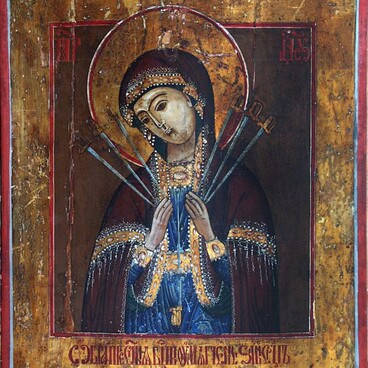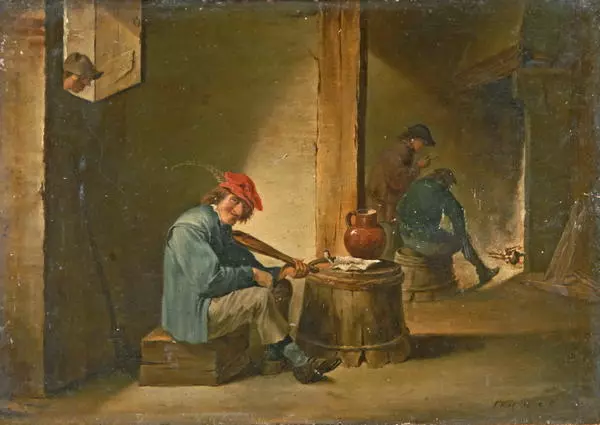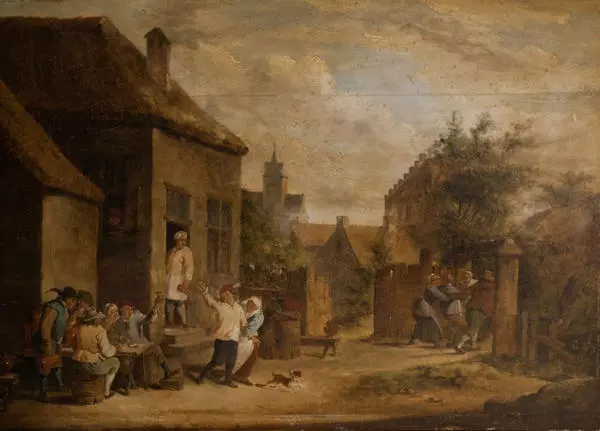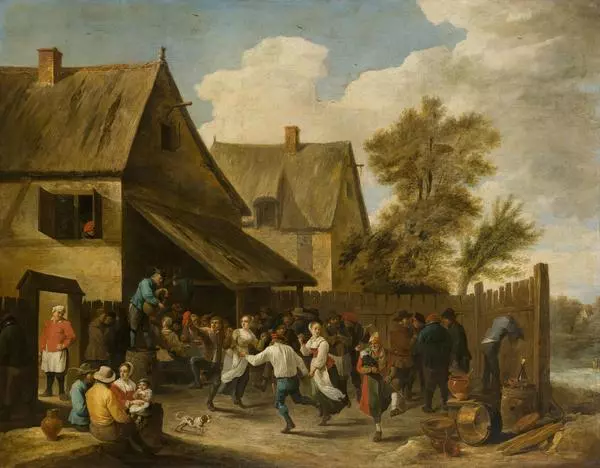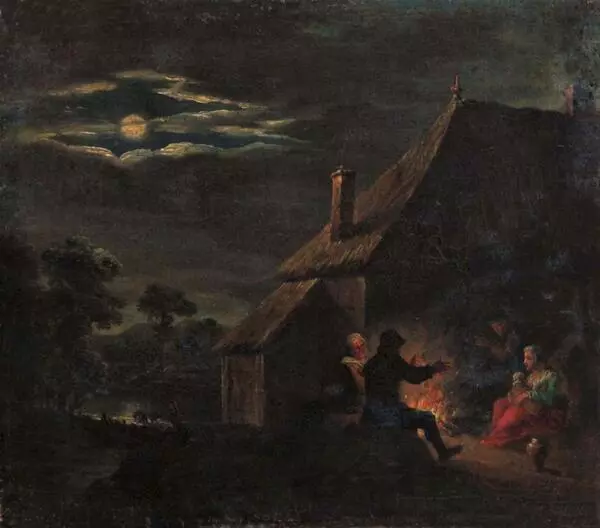David Teniers II was a Flemish painter of the 17th century, the most famous representative of the Teniers dynasty of artists. His works adorn the most famous museums of the world: the Hermitage, the Pushkin Museum, the Prado, the Dresden Gallery.
The artist was born in Antwerp in 1610. At the age of 22, Teniers was accepted into the Antwerp Guild of Saint Luke, and in 1644 he became a dean of the Guild. Teniers gradually gained popularity among other artists and the nobles: he was friends with Rubens and was married to Anna, daughter of Jan Brueghel the Elder.
In 1651, the Governor of the Spanish Netherlands, Archduke Leopold Wilhelm, appointed Teniers as a court painter and curator of his art gallery of Italian and Dutch paintings. In 1659, Teniers published the first ever illustrated catalog of artworks Theatrum Pictorium (Theater of Paintings). It included 243 printed images of paintings with the names of the masters: for the publication, Teniers first personally painted reduced copies of the canvases which were then used to make engravings.
The painting ‘Abraham Thanking God’ was painted during his Brussels period, when the artist served at the court and was the keeper of paintings. Teniers depicted a popular biblical story: God tells Abraham to sacrifice his beloved son, Isaac. Abraham is ready to kill his son, but an angel appears and announces that Abraham has passed the God’s test and proved his obedience, and a lamb is sacrificed instead of Isaac.
Traditionally, artists chose the most dramatic moment for their paintings: Abraham raises a dagger, the faces of the heroes are distorted with pain and fear, and at the last moment an angel appears and stops Abraham’s hand. Instead, David Teniers II depicted the ending of the story: a miracle has happened, father and son bow at the altar, thanking God.
The faces of the heroes do not show what they have just experienced. However, some details speak about the tragedy that has almost happened: the lowered sleeve of Isaac’s shirt, heavy horizontal lines of clouds, which are balanced by the light falling on the sacrificial lamb, and the dawn on the horizon. The works of David Teniers II are distinguished by his thorough manner of painting, refined and expressive color palettes, and the intimacy of the plots.
The artist painted the biblical characters dressed in the costumes of his contemporaries, and the town on the horizon looks like a 17th-century city. Probably, by doing so, he wanted to emphasize that biblical stories are always relevant.
The artist was born in Antwerp in 1610. At the age of 22, Teniers was accepted into the Antwerp Guild of Saint Luke, and in 1644 he became a dean of the Guild. Teniers gradually gained popularity among other artists and the nobles: he was friends with Rubens and was married to Anna, daughter of Jan Brueghel the Elder.
In 1651, the Governor of the Spanish Netherlands, Archduke Leopold Wilhelm, appointed Teniers as a court painter and curator of his art gallery of Italian and Dutch paintings. In 1659, Teniers published the first ever illustrated catalog of artworks Theatrum Pictorium (Theater of Paintings). It included 243 printed images of paintings with the names of the masters: for the publication, Teniers first personally painted reduced copies of the canvases which were then used to make engravings.
The painting ‘Abraham Thanking God’ was painted during his Brussels period, when the artist served at the court and was the keeper of paintings. Teniers depicted a popular biblical story: God tells Abraham to sacrifice his beloved son, Isaac. Abraham is ready to kill his son, but an angel appears and announces that Abraham has passed the God’s test and proved his obedience, and a lamb is sacrificed instead of Isaac.
Traditionally, artists chose the most dramatic moment for their paintings: Abraham raises a dagger, the faces of the heroes are distorted with pain and fear, and at the last moment an angel appears and stops Abraham’s hand. Instead, David Teniers II depicted the ending of the story: a miracle has happened, father and son bow at the altar, thanking God.
The faces of the heroes do not show what they have just experienced. However, some details speak about the tragedy that has almost happened: the lowered sleeve of Isaac’s shirt, heavy horizontal lines of clouds, which are balanced by the light falling on the sacrificial lamb, and the dawn on the horizon. The works of David Teniers II are distinguished by his thorough manner of painting, refined and expressive color palettes, and the intimacy of the plots.
The artist painted the biblical characters dressed in the costumes of his contemporaries, and the town on the horizon looks like a 17th-century city. Probably, by doing so, he wanted to emphasize that biblical stories are always relevant.


